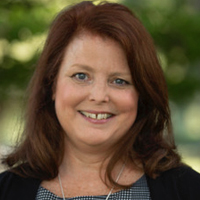
Estate planning is a major component of a comprehensive financial plan. However, getting clients to focus on their wishes regarding their own death is sometimes easier said than done.
For most people, it is much more palatable to plan for the end of their life when they are young and death seems far off in the future. End-of-life planning can feel quite different to a person who is older, when the last of his or her days looms closer, and even more so to someone facing a life-threatening or terminal illness.
In our society, talking about death is difficult and, in many ways, is considered taboo. Because of this, death can be the “elephant in the room” when meeting with a client facing a severe or terminal illness. Beyond the practical elements of proper estate planning, advisors may be unsure of how best to help clients who are facing their own mortality.
The difficulty in discussing death can sometimes come from a person’s own fears about it. For professionals, end-of-life planning should be considered as integral a part of the planning process as retirement or longevity planning.
Increasing Need for End-of-Life Planning
Given the size of the current aging population in the U.S., advisors should to be prepared to help clients plan for the end of life. The stark reality is that the impending “age wave” will lead to a “death boom.”
“The stark reality is that the impending ‘age wave’ will lead to a ‘death boom.'”
It is anticipated that in the next 30 years there will be an increase in the number of deaths at a rate not experienced before in this country. According to the U.S. Census Bureau, the number and percentage of people who die will increase dramatically every year and not begin peaking until 2055.
Of course, a practical way to begin to help a client faced with death is to review his or her current estate plan. It is important to make sure that all necessary documents, such as wills and/or trusts and beneficiary designations, are up to date and in accordance with his or her wishes.
In addition, it is important to make sure that any advanced directives and wishes regarding life-sustaining treatments are properly documented. Copies of these documents should be placed in the client’s medical records. Luckily, the widespread use of electronic medical records allows for these documents to be easily accessed by all members of a person’s medical team.
On a psychological level, having the estate planning paperwork up to date can go a long way in putting a client’s mind at ease that his or her affairs are “in order.” People take comfort knowing that they have done all they can to make it easier for loved ones to settle their final affairs after they die. Doing this can also provide a gateway for deeper conversations with clients about the more personal aspects of end-of-life preparation.
Another meaningful way for clients to prepare for end of life is to suggest they plan their own funeral service or celebration of life. Planning in advance can be empowering and allows individuals to share their wishes on how they would like their life to be celebrated when they are gone. In a time when things can often seem out of a person’s control, this allows for some level of control.
Plan for Significant Medical Expenses
While not often the primary focus when someone is facing a life-threatening illness, finances can still be a concern. In many cases, the cost of care at the end of life is quite significant.
According to data from the Centers for Medicare and Medicaid Services, a substantial portion of all Medicare spending occurs in the last year of life. Most of the expenditures are attributed to costly medical treatments administered in a hospital during the last days of a person’s life. Along with this, there can be sizeable out-of-pocket expenses attributed to home care, medications and/or nursing home stays.
While some people will stop at nothing to pursue a cure for their illness, others may choose to end medical treatment. As one might imagine, discontinuing treatment can be a difficult decision for a person to make and often puts a great deal of stress on them and their family.
To make matters more challenging, our medical system tends to lean more heavily towards curative practices and is less equipped to provide adequate support to patients who no longer wish to seek treatment. Sadly, choosing to discontinue medical treatment is sometimes viewed as “giving up” even within the medical community.
As Atul Gawande, a surgeon and author of “Being Mortal: Medicine and What Matters in the End,” points out, modern medicine, in its attempt to manage health, lacks the ability to manage mortality. As a physician himself, he admits that many doctors feel a sense of failure when facing terminal illness. Because many lack adequate training on end-of-life issues, it’s often hard for doctors to know what to do when illnesses can’t be cured. As Dr. Gawande suggests, it is critical to not merely focus on a “good death,” but as a society we must also help people live “as good a life as possible until the end.”
When working with someone who is facing the end of life, the focus should be on helping the client discuss their own priorities. It is not uncommon for the people around them to get caught up in the gravity of the situation and to forget to find out what is most meaningful for the client.
For some, a priority might be maximizing quality of life over quantity of days. For others, it might be deepening his or her spirituality and/or reaching a certain milestone or event in life. And yet for others, it might be preferring to die at home rather than in a hospital connected to machines. By helping a client consider his or her priorities, advisors can play a valuable role in redirecting the focus back to the client.
Consider Hospice and Palliative Care
There are also services that help people facing serious illness and their families. Hospice and palliative care are two such providers. Both, hospice and palliative care, provide crucial support to people transitioning from cure to comfort care. They can assist individuals and their families with the emotional, psychosocial and spiritual aspects of dying.
While the terms are often used interchangeably, hospice care and palliative care are not the same. Hospice care is a type of palliative care that can only be delivered during the last six months of life. If a person outlives the six-month timeframe, however, a doctor can recertify the terminal prognosis and care can be continued. When a person begins hospice care, all medical treatments are discontinued and the primary goal is to keep the person as comfortable as possible until the end.
Palliative care, on the other hand, is care that relieves and treats the symptoms of serious illness. Palliative care can be administered at any point in the illness and often begins at the time of diagnosis. When a person receives palliative care, they can also receive curative medical treatments. For both hospice and palliative care, if an individual meets the requirements, all or most of the costs associated with the services are covered by Medicare or Medicaid.
In many situations, the role of an advisor can extend beyond the time when a client passes away. Because of the personal nature of the work, financial advisors often develop strong relationships with a client’s family members. While it is natural for everyone to experience some level of grief after the death of a loved one, it is important to recognize when a spouse or child may need additional support.
Most hospice and palliative care providers offer grief counselling as part of their services. Many service providers also offer specialized grief counselling for young children. It is a good idea to get to know the resources that are available for families coping with the loss of loved one. It can go a long way in establishing a lasting relationship with the family long after a client has died.
While end-of-life planning requires a certain level of awareness, advisors are not expected to become chaplains or experts in medical matters. However, end-of-life planning should be considered as important in the overall planning process as other areas of planning. Since clients turn to advisors for advice and counsel at other critical junctures in life, being comfortable and knowledgeable discussing end-of-life issues allows advisors to be an important sounding board for clients when they may need one the most.
It also provides an opportunity be a comforting resource to clients and their families at a challenging time. And for those who truly strive to make a difference in the lives of their clients, there may be nothing more meaningful than walking alongside a person as they transition from this life to the next.
Molly Prues, a gerontologist, is CEO and founder of VistaLynk, a company that provides education on the issues that impact older age and caregiving clients. VistaLynk’s ground-breaking programs provide the building blocks to reimagine aging and empower caregiving.







